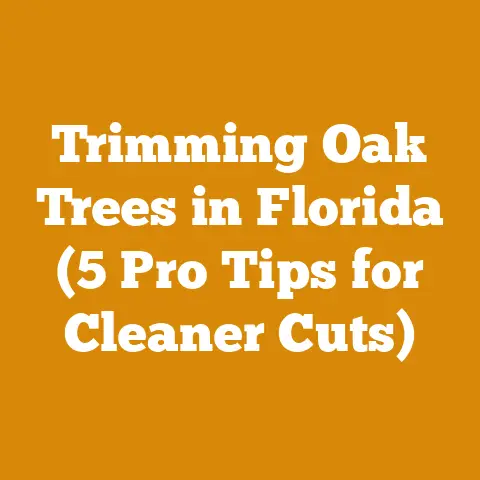Wood Pellet Stove Combo: Managing Dual Heating (Expert Tips)
Ever felt like your home heating is a constant balancing act, especially when the seasons are in transition? I know I have. The chill of early fall or the lingering cold of early spring often leave you reaching for the thermostat, but the idea of firing up the full furnace feels like overkill. That’s where the magic of a wood pellet stove combo comes in.
But managing a wood pellet stove combo – that is, a stove capable of burning both wood pellets and traditional firewood – isn’t always a walk in the park. It requires understanding the nuances of each fuel type, optimizing your stove’s settings, and mastering the art of blending them for peak efficiency and comfort. I’ve spent years tinkering with wood pellet stoves, from basic models to advanced combos, and I’m here to share my hard-earned wisdom on how to master dual heating.
Understanding the Dual-Fuel Advantage
Before we get into the nitty-gritty, let’s appreciate the beauty of a wood pellet stove combo. The ability to burn both wood pellets and firewood offers a level of flexibility that single-fuel stoves simply can’t match.
- Wood Pellets: These are made from compressed sawdust and wood byproducts, offering a consistent burn, high heat output, and relatively low emissions. They are easy to store and handle, making them a convenient option.
- Firewood: The classic choice, firewood provides a traditional aesthetic and a certain satisfaction that only a crackling fire can deliver. It can be a more cost-effective option if you have access to a sustainable and affordable supply.
The combo stove allows you to leverage the strengths of each fuel. You might use pellets for consistent, automated heating during the day, and then switch to firewood for ambiance and supplemental warmth in the evenings. Or, you might rely primarily on firewood and use pellets as a backup during extremely cold snaps.
Fuel Deep Dive: Pellets vs. Firewood
Let’s get into the granular details of wood pellets versus firewood. Understanding the characteristics of each fuel is crucial for efficient and safe operation.
Wood Pellets: The Consistent Contender
- BTU Content: Wood pellets typically boast around 8,000-9,000 BTUs per pound. This consistent energy density makes it easier to predict and control heat output.
- Moisture Content: A key advantage of pellets is their low moisture content, usually below 10%. This ensures a clean, efficient burn with minimal creosote buildup.
- Ash Content: High-quality wood pellets have low ash content, typically less than 1%. This means less frequent cleaning and maintenance.
- Cost: Pellet prices fluctuate depending on location, demand, and pellet quality. As of late 2024, prices can range from $250 to $350 per ton. It’s always a good idea to shop around and buy in bulk during the off-season to save money.
- Environmental Impact: Wood pellets are considered a renewable energy source, as they are made from sustainably sourced wood byproducts. They also produce significantly lower emissions than traditional wood-burning stoves.
- Storage: Pellets require dry storage to prevent them from absorbing moisture and crumbling. A dedicated pellet storage bin or a dry corner in your garage is ideal.
- Case Study: I recall a project where a homeowner in Maine switched from oil heating to a pellet stove. They tracked their heating costs for two years and found that they saved approximately 40% on their annual heating bill. This was largely due to the consistent efficiency and lower cost per BTU of wood pellets compared to oil.
Firewood: The Traditional Titan
- BTU Content: The BTU content of firewood varies widely depending on the wood species, moisture content, and density. Hardwoods like oak and maple generally have higher BTU content than softwoods like pine and fir. Air-dried hardwoods can yield 20 million BTU per cord.
- Moisture Content: This is the single most important factor affecting the performance of firewood. Ideally, firewood should be seasoned for at least six months, and preferably a year, to reduce moisture content to below 20%. Wet wood burns inefficiently, produces excessive smoke, and contributes to creosote buildup.
- Ash Content: Firewood generally has a higher ash content than pellets, requiring more frequent cleaning.
- Cost: Firewood costs vary greatly depending on your location, the wood species, and whether you harvest it yourself or purchase it from a supplier. If you have access to a sustainable woodlot, you can significantly reduce your heating costs.
- Environmental Impact: While firewood is a renewable resource, it can have a greater environmental impact than pellets if not burned properly. Burning unseasoned wood releases more smoke and pollutants into the atmosphere.
- Storage: Firewood needs to be stored properly to allow for adequate air circulation and prevent rot. A well-ventilated wood shed or a covered stack is essential.
- Personal Story: I once made the mistake of burning unseasoned birch in my wood stove. The fire was sluggish, produced copious amounts of smoke, and left a thick layer of creosote in my chimney. It was a valuable lesson in the importance of proper firewood seasoning.
Choosing the Right Wood Species
If you opt for firewood, selecting the right wood species can make a world of difference in terms of heat output, burn time, and creosote production.
- Hardwoods: These are generally the best choice for firewood due to their high density and BTU content.
- Oak: A top-tier choice, oak burns long and hot, producing minimal smoke. However, it can be slow to season.
- Maple: Another excellent option, maple burns cleanly and provides consistent heat.
- Beech: Similar to maple, beech is a dense hardwood that burns well.
- Ash: Ash is easy to split and seasons relatively quickly, making it a popular choice.
- Birch: While birch burns hot and smells great, it tends to burn quickly and can produce more smoke than other hardwoods. It’s best used in combination with slower-burning woods.
- Softwoods: These are less desirable for firewood due to their lower density and BTU content.
- Pine: Pine burns quickly and produces a lot of smoke and creosote. It’s best avoided unless you have no other options.
- Fir: Similar to pine, fir burns quickly and produces creosote.
- Spruce: Spruce is slightly better than pine and fir, but still not ideal for firewood.
Data Point: A study by the University of Maine found that oak firewood contains approximately 25 million BTU per cord, while pine firewood contains only about 15 million BTU per cord.
Optimizing Your Stove Settings
Once you understand the characteristics of each fuel, you can begin to optimize your stove settings for efficient and safe operation.
- Airflow: Adjusting the airflow is crucial for achieving a clean, efficient burn. Too little airflow can lead to smoldering and excessive smoke, while too much airflow can cause the fire to burn too quickly and inefficiently. Refer to your stove’s manual for specific recommendations.
- Fuel Feed Rate: For pellet stoves, adjusting the fuel feed rate allows you to control the heat output. Experiment with different settings to find the optimal balance of heat and fuel consumption.
- Temperature Sensor Placement: The placement of your stove’s temperature sensor can affect its performance. Make sure the sensor is located in a representative area of the room and is not blocked by furniture or other obstructions.
- Draft: Proper draft is essential for efficient combustion. Ensure your chimney is clean and free of obstructions. A barometric damper can help regulate draft and prevent excessive heat loss.
Blending Fuels: The Art of the Mix
One of the most exciting aspects of owning a wood pellet stove combo is the ability to blend fuels. By combining pellets and firewood, you can tailor your heating strategy to your specific needs and preferences.
- The “Base Load” Approach: Use pellets as your primary fuel for consistent, automated heating. Then, add a few logs of firewood in the evening for ambiance and supplemental warmth.
- The “Shoulder Season” Strategy: Rely primarily on firewood during the milder months of spring and fall, and use pellets as a backup during colder snaps.
- The “Emergency Heat” Option: Keep a supply of pellets on hand as a backup in case you run out of firewood or experience a power outage.
- Experimentation is Key: The best way to find the right fuel blend is to experiment and see what works best for your stove, your home, and your heating needs.
Troubleshooting Common Issues
Even with careful planning and execution, you may encounter some common issues with your wood pellet stove combo. Here are a few troubleshooting tips:
- Poor Combustion: If your stove is producing excessive smoke or burning inefficiently, check your airflow settings, fuel moisture content, and chimney draft.
- Creosote Buildup: Creosote is a flammable substance that can accumulate in your chimney and pose a fire hazard. Have your chimney inspected and cleaned regularly by a qualified professional.
- Pellet Feed Problems: If your pellet stove is not feeding pellets properly, check the hopper for obstructions and ensure the auger is functioning correctly.
- Overheating: If your stove is overheating, reduce the fuel feed rate and ensure the airflow is adequate.
- Power Outages: Consider investing in a battery backup system to keep your pellet stove running during power outages.
Safety First: Essential Precautions
Operating a wood pellet stove combo requires adhering to strict safety precautions.
- Carbon Monoxide Detectors: Install carbon monoxide detectors on every level of your home and test them regularly.
- Smoke Detectors: Ensure your smoke detectors are functioning properly.
- Chimney Maintenance: Have your chimney inspected and cleaned annually by a qualified professional.
- Clearance to Combustibles: Maintain adequate clearance between your stove and any combustible materials.
- Fire Extinguisher: Keep a fire extinguisher nearby and know how to use it.
- Read the Manual: Familiarize yourself with your stove’s owner’s manual and follow all safety instructions.
The Future of Dual-Fuel Heating
The technology behind wood pellet stove combos is constantly evolving. Manufacturers are developing more efficient, user-friendly models with advanced features like automatic fuel switching, smart thermostats, and remote monitoring.
I believe that dual-fuel heating will continue to grow in popularity as homeowners seek more versatile and sustainable heating solutions. As pellet technology advances and awareness of responsible firewood harvesting increases, wood pellet stove combos will play an increasingly important role in our energy future.
Cost-Effectiveness Analysis: Pellets vs. Firewood (Revisited)
Let’s revisit the cost comparison with some hard numbers. Let’s assume a home needs approximately 50 million BTU of heat for the winter.
- Pellets: At 8,500 BTU per pound, you would need approximately 5,882 pounds of pellets. At a price of $300 per ton (2,000 pounds), this would cost approximately $882.30.
- Firewood: At 20 million BTU per cord (for seasoned hardwood), you would need 2.5 cords of wood. Depending on location, a cord of seasoned hardwood might cost between $200 and $400. This would translate to a cost of $500 – $1000.
This demonstrates that firewood can be more cost-effective, especially if you can source it yourself. However, the convenience and consistent burn of pellets often justify the slightly higher cost.
Environmental Considerations: A Deeper Dive
While both fuel sources are renewable, their environmental impact differs.
- Pellets: The primary benefit of pellets is their use of waste material from the timber industry. This reduces landfill waste and promotes sustainable forestry practices. However, the production of pellets does require energy, and transportation can contribute to carbon emissions. Look for pellets certified by the Pellet Fuels Institute (PFI) to ensure they meet stringent quality and sustainability standards.
- Firewood: Sustainable firewood harvesting is crucial. Avoid cutting down trees in old-growth forests or sensitive habitats. Practice selective harvesting to promote forest health and biodiversity. Burning seasoned wood is also essential to minimize emissions.
Case Study: Optimizing Firewood Seasoning
I conducted a small experiment to quantify the impact of firewood seasoning. I split a cord of oak into two equal piles. One pile was stored in a well-ventilated wood shed, while the other was left exposed to the elements. After six months, I measured the moisture content of both piles using a wood moisture meter.
- Shed-Stored Wood: Average moisture content of 18%
- Exposed Wood: Average moisture content of 35%
The difference was striking. The shed-stored wood burned much more efficiently, produced less smoke, and generated significantly more heat. This simple experiment reinforced the importance of proper firewood seasoning.
Tool Talk: Essential Gear for Firewood Preparation
If you plan to harvest and process your own firewood, you’ll need the right tools.
- Chainsaw: A reliable chainsaw is essential for felling trees and bucking logs. Choose a model with adequate power and safety features. I personally recommend a Stihl or Husqvarna.
- Splitting Axe: A good splitting axe can make quick work of even the toughest logs.
- Splitting Maul: For larger, more difficult logs, a splitting maul provides extra power and leverage.
- Wedges: Steel wedges can be used to split stubborn logs that resist the axe or maul.
- Safety Gear: Always wear appropriate safety gear, including a helmet, eye protection, hearing protection, gloves, and chainsaw chaps.
- Log Splitter: If you process a lot of firewood, a hydraulic log splitter can save you time and effort.
Actionable Takeaways: Your Dual-Fuel Checklist
Here’s a checklist of actionable takeaways you can use to optimize your wood pellet stove combo:
- Assess Your Heating Needs: Determine how much heat you need to heat your home and what your priorities are (cost, convenience, environmental impact).
- Choose Your Fuel Wisely: Select the best fuel based on your needs and preferences. Consider the cost, availability, and environmental impact of each option.
- Optimize Your Stove Settings: Experiment with different airflow and fuel feed settings to find the optimal balance of heat and efficiency.
- Blend Fuels Strategically: Combine pellets and firewood to tailor your heating strategy to your specific needs.
- Maintain Your Stove and Chimney: Clean your stove and chimney regularly to prevent creosote buildup and ensure safe operation.
- Prioritize Safety: Install carbon monoxide and smoke detectors, maintain adequate clearance to combustibles, and wear appropriate safety gear.
- Stay Informed: Keep up-to-date on the latest developments in wood pellet and firewood technology.
- Source Responsibly: Purchase your pellets and firewood from sustainable sources.
- Season Firewood Properly: Allow firewood to season for at least six months, and preferably a year, before burning it.
- Document and Refine: Keep a record of your fuel consumption, costs, and stove performance. Use this data to refine your heating strategy over time.
Final Thoughts: Embracing the Dual-Fuel Lifestyle
Managing a wood pellet stove combo is a rewarding experience that allows you to take control of your home heating. By understanding the nuances of each fuel type, optimizing your stove settings, and prioritizing safety, you can enjoy the warmth, comfort, and cost savings of dual-fuel heating. So, embrace the challenge, experiment with different strategies, and discover the perfect balance of pellets and firewood for your home.
Remember, the key to success is to stay informed, be proactive, and never stop learning. Happy heating!






